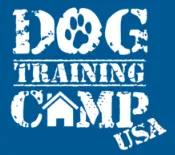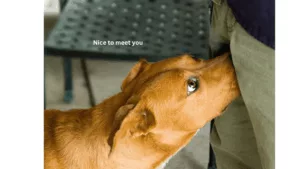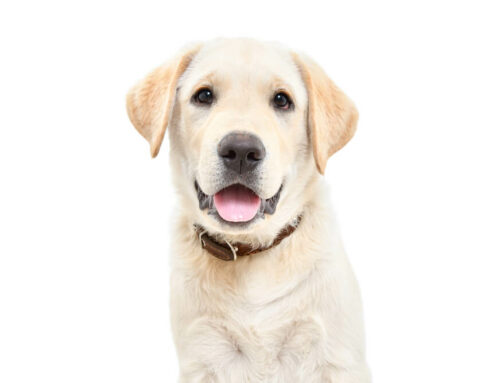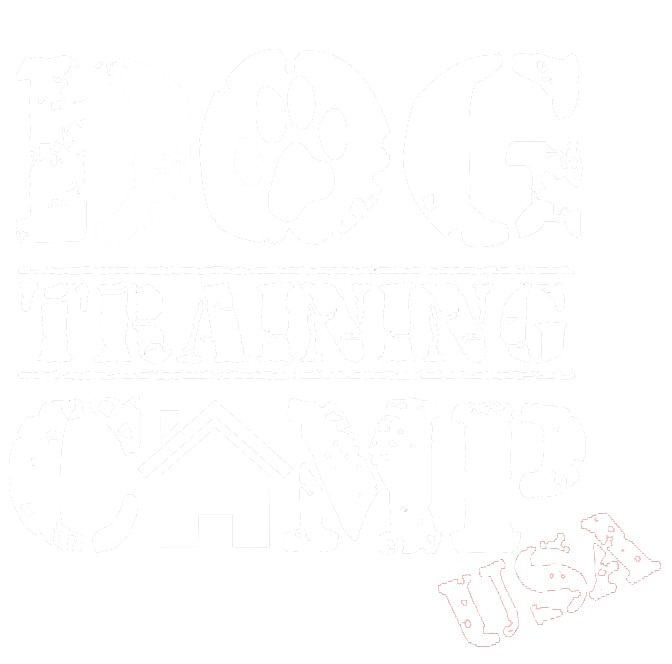Why Instinctive Protection Training Beats Traditional Protection Guard Dog Training
Many dog owners want a pet who can keep them safe—but traditional protection dog training can be risky, expensive, and unnecessary. In this post, we’ll explore a safer alternative called instinctive protection training, where your dog learns to alert you naturally without aggressive behavior.
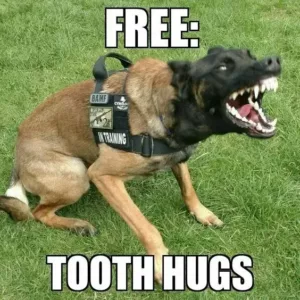
When your “guardian” bites the s*** out of you
It was early 2013 when I attended handler’s course at Lackland Air Force Base near San Antonio, Texas immediately after basic training. Handler’s course is essentially the Army’s version of “K9” school, where you learn how to be a dog handler. I was a midwestern kid experiencing my very first southern winter, where every day I was elated that I got out of bed and it wasn’t two degrees outside. It was my first big Army adventure. I was green as the day is long. And not because I wore fatigues to work every day.
Handler trainees got to work with a group of dogs that had somehow failed out of being assigned to a typical duty station. Some of them had minor training deficiencies, while others had minor medical issues that prevented them from being deployable. They were excellent training aids for a bunch of kids who knew absolutely nothing about dog handling.
They were our companions as we fumbled through learning the basics of how to groom, hold the leash correctly, and give commands. The schoolhouse dogs were rotated through the same menial tasks with a new handler every couple of weeks. Like a seasoned horse that memorizes their regular riding trail, these dogs were always about 25 steps ahead of their handlers. Each of them was beloved by the instructors.
One particularly gorgeous February afternoon in south Texas, we were being evaluated and certified by the commander on our proficiency in the task of “building search”, where we simulated a scent search of a building and apprehending a subject. It was a task that would basically go on our final report card of the course and determine whether we passed or failed the entire course. This may come as a shock to the reader, but my tendency in these situations is to have crippling anxiety about it for about three days.
It came my turn to test. I grabbed my dog from the trailer. At this particular juncture, I had been assigned a spicy little female Malinois that had been around the block a time or two. I wish I could remember her name, but I can’t. For the sake of this story, we’ll call her Rudy. Only because I’ve always wanted to name a female dog Rudy. I mean, the nickname potential is limitless. Rudy doodie. Rudy tootie fresh’n fruity. Kanga-rudy. Rudy rose if you wanna go more elegant than Rudy doodie.
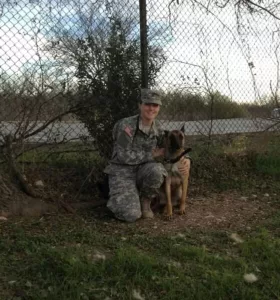
Rudy and I after routine grooming instruction
The pressure was on when Rudy and I reported to the commander under the giant Texas sun. He pulled out his clipboard and clicked his shiny brass pen. I loudly recited the required announcement that I was entering the building with a police dog and if the subject didn’t make himself known by sight or sound, he would be bit. And it would hurt. A lot.
I restrained Rudy next to me, holding her by the collar as she lunged, chattered her teeth, and seemed to say over and over “let’s go let’s go let’s go”. The combination of my verbal announcement and holding Rudy by the collar in such a way was her signal to “turn on” and that we were looking for a dude for her to put her teeth on. Our use of the hold on the collar in this example is like cocking the gun. Releasing the collar is pulling the trigger that releases all of the energy of the dog on the target.
After one final warning, I released my grip on Rudy’s collar and she lunged into a long hallway of about 10 different doors, pulling me on the other end of the leash behind her. Within seconds of entering the building, Rudy correctly alerted on the door where the subject was hidden by repeatedly scratching at the door frantically while looking back at me.
I began restraining Rudy again and I stammered through my verbal challenge, where I loudly ordered the subject to come out from behind the door with their hands up. Rudy at this point is so frustrated at me that she is chattering and yelping over and over.
As I did this, I bent over to switch Rudy’s leash from her flat collar (the collar used for searching) to her chain collar (the collar used in high-drive scenarios when you need extra control) in preparation for sending her on the bite. I fumbled through this critical step, taking several seconds too long for Rudy’s liking.
While she was lunging and barking to get the subject, I was restraining her while clumsily attaching the leash. When I finally stood up straight, Rudy had enough.
We made eye contact that lasted approximately one millisecond before she reared up and sank her front row of teeth into my left tricep.
If Rudy could speak English, she would have said, “you better send me to bite the man right now you dumb idiot”.
Rudy taught me a valuable lesson that day. Don’t take too long because a female mal ain’t gonna wait. She always knows more than you. Also the dog that is trained to protect you is just as capable of causing you great bodily harm if you’re not careful.
And we passed our test!
Rudy left a tiny scar where she tagged me. I see it today and think of her fondly.
Why We Don’t Train ‘Protection’ Dogs
I’m more than familiar with holding the other end of a leash attached to a maligator ready to bite the man. As you can see by Rudy’s story, personal protection training has been a mainstay in the dog training industry for decades. Long before experts began training dogs to bite on command and filming it for the internet, man’s best friend guarded everything. Ships, livestock, royal palaces, junkyards, military installations. Military working dogs are considered “force multipliers” by the U.S. military and for good reason – they can move, communicate, and clear areas more quickly than their human counterparts.
Many people assume that personal protection training simply means teaching their dog to defend them in dangerous situations, like what they see in movies and on Tik Tok. In reality, it’s far more complex and comes with significant risks and responsibilities. I’ve had far better results focusing on helping dogs integrate safely into family life, ensuring they are well-mannered, confident, and capable of responding to real-life scenarios in a way that protects them and those around them.
Dogs don’t possess the nuanced understanding of human social interactions that we do. They rely on body language, tone, and previous experiences to interpret situations. Personal protection training, if not managed correctly, can create unpredictable behavior patterns. Such as biting drunk Uncle Joe at the family BBQ.

Common Misconceptions About Protection Dogs
Let’s talk about some common ones we hear every day:
- “If my dog is trained for protection, they’ll only bite meanie heads.”
- Not exactly. A dog doesn’t have a moral compass. It doesn’t know that the person raising their voice is your best friend from college and not an intruder. Teaching a dog to respond aggressively can lead to misinterpretations and unintended consequences.
- “I want my dog to attack on command.”
- That sounds cool in movies, but in real life, it’s a massive liability. If your dog bites someone, you could be held legally responsible—even if you thought they were acting in defense.
- “Protection dogs are just like family pets but with extra training.”
- Nope. True protection dogs live structured lives and require ongoing training. They are NOT house pets in the traditional sense. They must always be under control and monitored to ensure their training is not misapplied in daily life.
I have worked with enough families to know that the average family does not have the time and resources available to handle and manage a fully trained personal protection dog. And that’s totally okay.
Nobody “Nose” Better Than Sparky
The great news about this is that your dog at home has a nose and the amazing capabilities to sort through a multitude of information the same as one of these high speed, low drag military canines. It’s unfathomable to imagine the intensity of a dog’s sniffing powers, especially since they can detect odors down to the parts per million.
Picture you are sitting in front of a cheeseburger. You haven’t eaten all day and you are ready to dig into the cheeseburger. You are drooling and staring at it. The smell is incredible! Can you imagine how that smell is? As you are sitting in front of the cheeseburger, you are probably smelling the strongest odor, the juicy beef patty. You might get a whiff or two of the other ingredients, maybe the sauce on the burger or the seasoning.
If a dog is sitting in front of the same cheeseburger, his experience is entirely different. He smells each and every ingredient individually. He can smell the lettuce, the sesame seeds on the bun, he can smell the cooking oil used on the patty, he can smell what type of flour was used when the bun was baked. He can tell if the pickles are organic!

When we use this example to describe the dog’s incredible sense of smell, we can begin to understand how our typical pet dogs can begin to differentiate between a human that might be a friend or foe. Ever seen a dog be able to tell when something was a little “off” with a person? If a shady character’s adrenaline is high because they are about to mug you, then it isn’t a far stretch that your dog will alert you because an individual with high adrenaline isn’t going to be an odor they have encountered every day.
We use this same principle with our military canines in the building search scenario from earlier. A suspect holed up hiding in a building from the police is going to be giving off an insane odor. We are experiencing odors of blood, sweat, adrenaline, or urine. All of these will be a totally different odor than what is present in the rest of the building or the rest of the humans accompanying the dog. If the dog is experiencing every day, common odors like cheeseburgers so intensely, he will definitely tell you when there is something off about your new boyfriend.
Unless you are capable of controlling your hormones under stress, you most likely won’t be able to fool a dog with a nose. And every dog has a nose.
Instinctive Protection Is The New Personal Protection
How do we apply these principles to our pets at home?
You live with your dog 24/7….you know your buddy’s quirks. Did your normally friendly and sociable dog snarl at the girl you were trying to rizz up at the park? Does your dog who is normally shy jump all over the door-to-door vacuum salesman? Is your dog who LOVES that one sniff spot at the park running away from the spot where he is normally excited?
By simply learning the dog’s behavior, their likes, dislikes, and mannerisms, you will always know when they are trying to tell you that something is wrong. This will require a little bit of forethought on your part.
If safety is your primary concern, there are much better ways to utilize your dog’s natural abilities without turning them into a liability. There are two things to focus on as an alternative:
- Teach an Alert Command – Instead of training a dog to attack, you can train them to alert you to potential danger. This could be a bark or a specific action that lets you know something is off.
- Socialization and Confidence Training – A confident dog is far more effective in protecting a home than a fearful one. Dogs that are well-adjusted, exposed to different environments, and trained with positive reinforcement are less likely to panic and more likely to react appropriately to situations.
#2 is very important because all you have to do is train your dog on the basics to get this relationship with them. We hone your dog’s instincts by exposing them to their natural environment and prove that we are worthy of their trust when they are unsure of their surroundings. That’s literally it. That’s all you have to do to get your dog to protect you.
‘But My Dog Is Too Friendly’
You might have the type of dog that would bring a common burglar his favorite ball as soon as the burglar was loading up your priceless family heirlooms. You have to decide if you are ok with that or if your property needs more protection when you aren’t around. They key here is understanding the difference in training when you are present versus when you are not present. Everybody’s situation is different, so if this applies to you, definitely give us a call to talk options!

All This Sounds Great, How Do I Start?
You’re already off to a great start if you’ve read this far! Doing your research and knowing your resources, budget, and limitations of dog breed is so important when setting out to complete any type of training. You can also listen to us discuss personal protection training on our podcast here. If you are looking for common-sense safety solutions that will help you keep your family and property secure without unnecessary liability or tens of thousands of dollars spent on a dog like Rudy who will probably only end up biting you instead of a bad guy, you should definitely just call us already.

